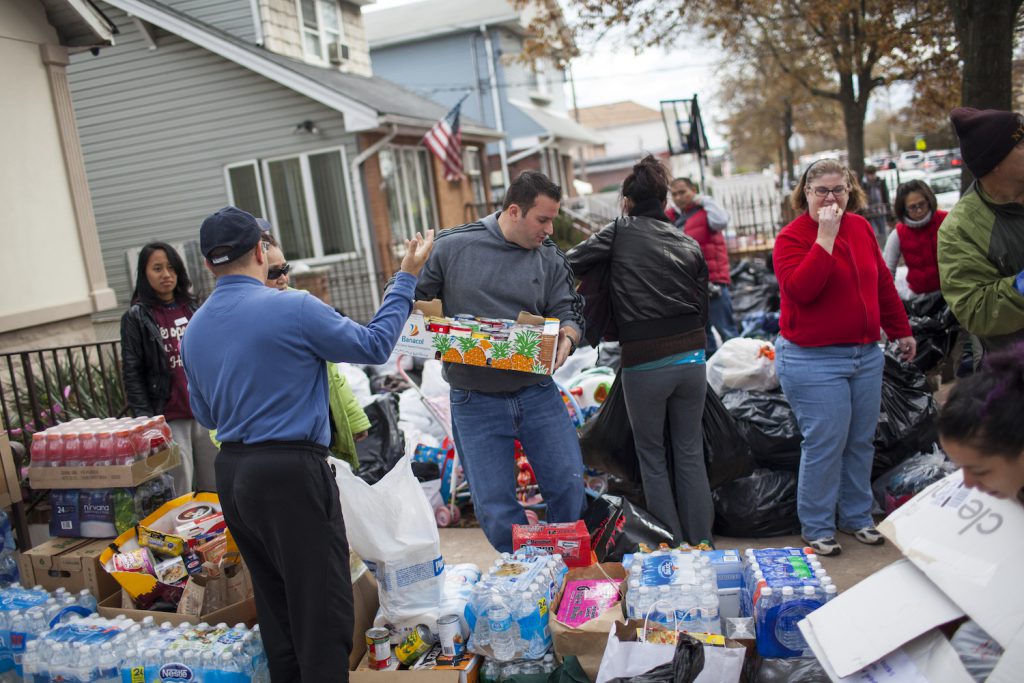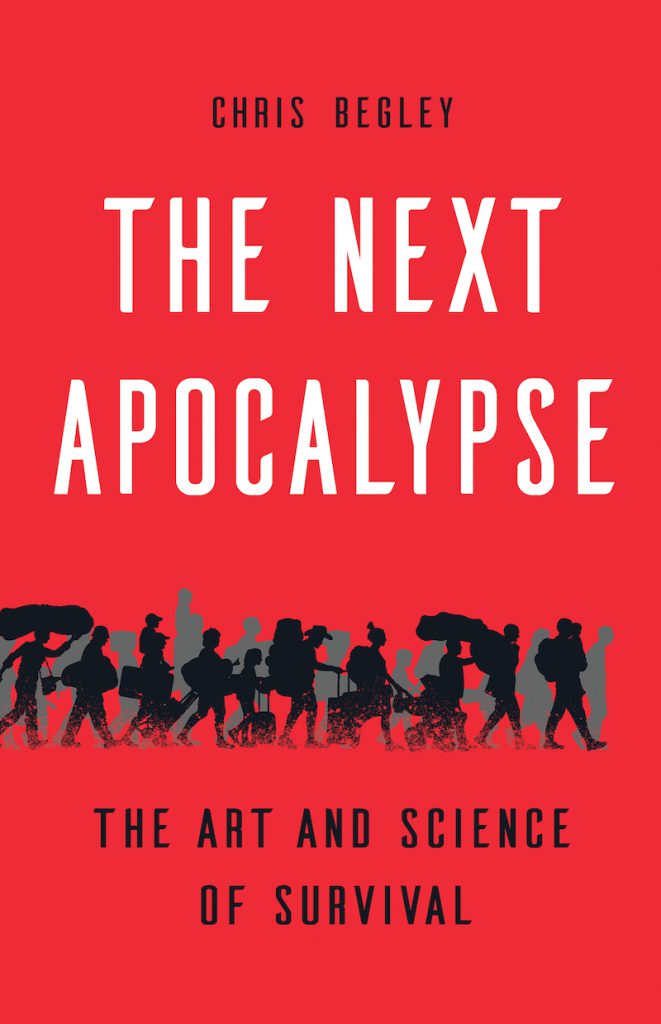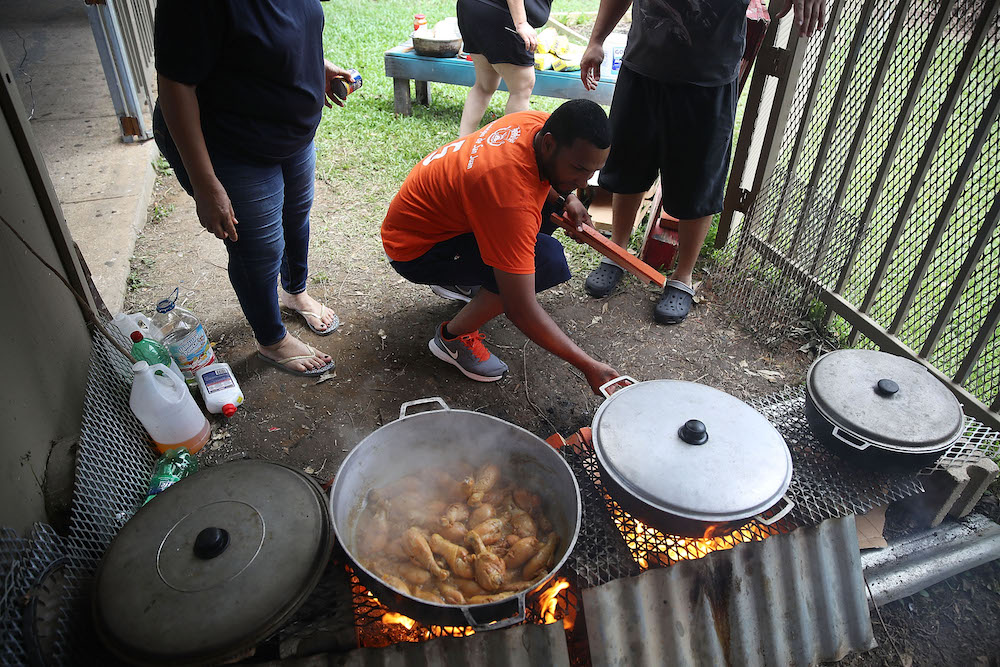You Won’t Survive the Apocalypse Alone

Excerpted from The Next Apocalypse: The Art and Science of Survival. © 2021 by Chris Begley. Published by Basic Books. All rights reserved.
“So, what is your escape plan?”
We were eating dinner when my friend asked me this. She had taken an urban survival course with me and was worried that climate change and the current political situation could precipitate a crisis.
“Where are you going to go when it all goes wrong?” Her question sounded offhand and spontaneous, but I knew this was what we were meeting to discuss. Her question was serious, and she was worried about the near future. She wanted some advice, and some hope.
I know where she imagined the conversation would lead. I must have a plan, she reasoned, that would allow me to utilize the wilderness survival skills I teach to flee the city and make a life in the hills. Or maybe, because I am an anthropologist, I knew which part of the world would be spared the worst of it.
I told her my plan was not to escape; there was no escape. My plan was to stay and help. If it all falls apart, there will be great need, and I will try to find a place I can contribute. There won’t be a way out. There are too many people, and the only future worth living requires us all to stick around and solve the problems together.
Media depictions of the apocalypse are very different: Disaster comes swiftly, everyone panics and runs, and a lone hero saves the day. These fantasies can hamper our ability to plan for and react to a more realistic scenario.
Looking to the past, we see how many of our ideas about societal “collapse” are wrong. In the past, consistently, we see people reorganizing, regrouping, and creating structures and systems that allow the new community to persevere. That was not the quick solution my friend was hoping to hear, perhaps, but she smiled, and I could see in her eyes that she already knew this was the answer.
I am an archaeologist, but I also teach wilderness survival courses. This interest grew out of my archaeological research in remote areas of Central America. I learned many of the skills I teach during the years I lived and worked with people from the Pech Indigenous group in Honduras. Skills like making fires were daily tasks in the village.
In fact, many of the “survival” skills I teach were everyday activities, especially when we were camping in the rainforest during our many trips documenting archaeological sites. In my survival courses, we discuss disasters, emergencies, and the unexpected. People want to know how to prepare, and how to survive.
Although I inhabit the world of academics, the world of preppers and survivalists is only a step away.
In the last few years, there has been an increased interest in my wilderness survival courses. Originally, I’d envisioned these courses as preparation for unexpected, short stays in the outdoors, such as getting lost while hiking.
What I find, however, is that people want to learn these skills in order to be prepared for a large-scale disaster. They want to get ready for pandemics, economic collapse, or the rise of authoritarianism. The disasters they imagine reflect increasing fears of an unstable world. Until recently, climate change drove these fears. Now, the fears include pandemics or political unrest.
Read more about the prepper movement: “For Preppers, the Apocalypse Is Just Another Disaster”
The bushcraft skills I teach are important, perhaps most valuable in the first days of dramatic change, but they are not the most important factor in societal survival.
Instead, how people react to a crisis will determine what comes next. Working cooperatively, identifying and listening to competent leaders with real expertise, learning from one another, and adapting to new circumstances will yield one outcome. Entrenching ourselves in the inequities of the present, and acting out of fear, will lead down a different path.
There are no natural disasters, the saying goes, only natural phenomena. The “disaster” results from our reactions, our decisions. If we are not careful, we envision societal collapse as something that happens to a group, as if an external force like a drought or pandemic determines the outcome of the crisis, and the people are passive or ineffectual in their response.
It is clear, however, that the societal response to an external force or crisis can shape the trajectory of a society as much or more than the external force itself.
Take, for example, the history of Kentucky—where I grew up.
A number of diseases devastated Indigenous populations in the Americas when Europeans arrived, but archaeologists and historians continue to refine our understanding of how this happened. We know that ultimately, a century or so after European arrival, the population of Native Americans declined by more than 90 percent. Much of this was a direct result of mortality from a number of diseases they had never before encountered, and for which they had developed no immunity.
Popular imagination has smallpox as the principal pathogen, but there were many others, including measles, influenza, typhus, and chickenpox. Not only did the diseases kill people directly, but also the large number of sick people made it hard to provide basic necessities for the rest of the population. These ancillary effects of the disease exacerbated the deadliness of these epidemics.
It was not just the diseases, however, that created this disaster. These were outbreaks taking place during a campaign of settler colonialism, and this reality shaped the way in which outbreaks unfolded. The response of Native American groups to this crisis also shaped the outcome.
Accounts of this catastrophic encounter often present Native American groups as passive recipients of a tragic circumstance, without recourse or remedy. While it is true that the pathogens were unknown among Native American populations and had devastating effects on their communities, it was not true that they were passive victims, or that they had no treatment or strategy to mitigate the effects of the diseases.
Most archaeologists now look at situations of “collapse” and see flexibility and adaptability.
Paul Kelton of the University of Kansas has written extensively about the ways in which Native Americans, particularly the Cherokee, were able to respond, “retarding mortality rates and curtailing the spread of contagions.” Certain strategies, such as avoiding interactions and quarantining, mirror our contemporary responses to the COVID-19 pandemic.
The most important element of this reaction, however, might have been the conviction that maintaining their traditional religious and social practices would ward off disease. From practicing seclusion of sick people to cleanliness rituals, actions taken by the Cherokee determined their future, and preserved their past.
In what is today Kentucky, trading patterns and alliances changed with the foreign influence beginning in the 16th century. Some groups may have left the area, while others re-formed or persisted. For this key period, from the late 17th to the early 18th century, there is a lack of eyewitness accounts and archaeological data, so it is not clear how closely the post-epidemic world resembled the previous one.
We do know that in the heavily fractured time in the mid-17th century and beyond, multi-tribal villages were common as survivors banded together. Thousands of Indigenous people still live in Kentucky today, of course.
Most archaeologists now look at situations of “collapse” like these and see flexibility and adaptability. While some things end, other things persist. This continuity can be more impressive and important than the disappearance of certain elements from the archaeological record.
Examining the past from a different angle, focusing on the resilience of ancient people rather than the collapse of a certain segment of the ruling group, gives us a blueprint for understanding what we will need in the future: flexibility and adaptability.
In a recent study looking at relief efforts after Hurricane Maria in Puerto Rico, information technology professor Fatima Espinoza Vásquez found that community leaders and activists did not try to re-create the structures that had been in place before the hurricane. Rather, mindful of the inequalities and failures of that system, and being experts in their own communities, they configured old and new technologies to improvise a functioning infrastructure. For instance, a landline connected to Skype and then broadcast on Facebook served to coordinate relief efforts, bypassing inefficient official channels.
Civilizations do not last forever. What I am concerned about is how fast change will come, and how dramatic will it be. Judging from historic examples of apocalyptic events, the whole process could take a very long time, be multicausal, and be unevenly felt among populations and across space and time.
I do not know exactly what the end of our civilization will look like, and I wonder about whether it will be understood as a catastrophe. From our data about the past, I imagine the process of collapse has already started. Environmental problems are one cause, and political and social issues—particularly inequities in wealth and power exacerbated by neoliberal policies over the last half century—are the other.
How quickly the unraveling will proceed, and how long until we realize that the process is going on, are harder to divine.
Apocalypses happen, all the time, on varying scales. Surviving them, like surviving most things, is a community effort, not an individual effort. You will need other people, and they will need you. The skills you bring, and the ones you learn along the way, will help the group. Ultimately, that community-mindedness and altruism will generate strong collectives. That is the only way we can persevere. That is what survival looks like.
This excerpt has been edited for style and length.



































